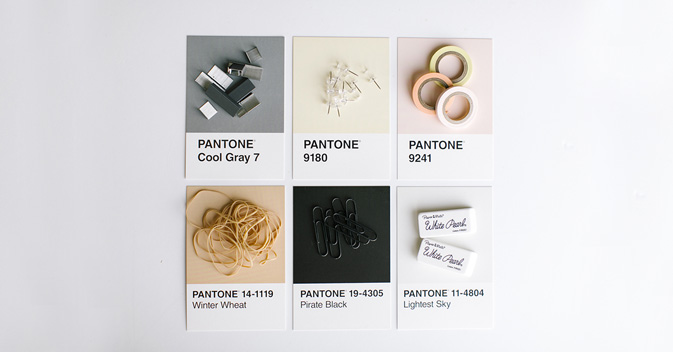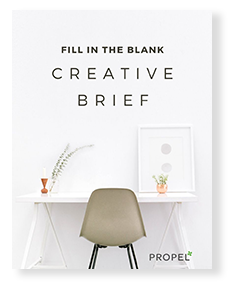Do you know what every business owner or entrepreneur wants so much more of? Time.
But you know how it is, the control freak in all of us wants to do it all exactly right, which means we need to do it ourselves.
However, that leads to vast and fast burnout, stress, overwhelm, and believe it or not, low-quality. I mean, how can one person do it all?
Keep in mind, you may not know how to complete all the tasks involved, this is a crippling blow to the project because if you can’t finish it correctly, it doesn’t get fully tackled, or completed to the best of its ability. ☹
This is exactly why knowing how to hand off some (or all) of the work the right way, helps ensure that the project ends up seeing the light of day- successfully!
Understanding how to hand off work through outsourcing and delegating is an art form in and of itself.
Outsourcing is all about giving up some of your workload to a person or business that isn’t involved in your business directly. Think freelancers, small firm hires, overseas manufacturing, etc.
This is a great way to have professionals take on some of the stress, I mean tasks. Remember to research those you outsourced to. It’s key that they provide the quality of work you’re used to and desire. It’s not all about financials here. Again, quality is what you want.
Delegating your work is a bit easier and doesn’t take the same amount of research as outsourcing. Delegating is when you hand over parts of a project to your in-house team members.
Sounds easy, right? If you’re a new business and just getting to know your team, it can be daunting. But don’t let that stop you. You have a team for a reason.
Clear communication is key!
This is a great time to introduce a creative brief. This creative brief tells it all with none of the “stuff” that can so easily get in the way.
It molds the creative vision both you and your client (if applicable) see in your respective heads into valuable and reliable words- all in one place, while giving the specifics on who in your company will be doing what to accomplish the vision.
What’s a Creative Brief and Why the Big Deal?
A creative brief is a simple document of one or two pages outlining your creative project’s structure and strategy.
The Project Manager works hand-in-hand with the client to create it, keeping everyone in the know, no one is surprised by deadlines, roles, or costs, so mismanagement isn’t an option. We like that.
Creative briefs are so critical and should be heavily leaned upon because it’s where all expectations are written and agreed to.
That means you know exactly where to find your project’s info and objectives and know where to look to make sure you’re staying on course.
Think about how much time you put into the logistics of your creative project (note the word “creative” here) and how much creativity is lost at times. It’s really easy to allow all the hoopla to get in the way.
Example of Project-Mishandle
Say you get a client with a very strict deadline for a new skirt-style to add to their summer fashion collection. You tell your fashion design team in email, “Hey, I need this by this day, it’s so many style examples, this is the look and feel.” The end.
Well, first of all, who works on what part? Jane and John both jump on the best styles to present and start drawing right away, and while creating looks, John realizes these ideas are better than the already agreed to fashion line and decides to run interference and go ahead and fix those babies up.
In doing this, he’s stopped working on the assigned project and is misusing valuable time. Also, who’s paying for this? Your company? The client? This will be a problem, no matter how genuine and innocent the effort.
And because in the last project that Jane and John worked together, Jane created all the looks, she assumed that’s what she was doing on this project. After all, no one said otherwise. So, she stopped working altogether after she completed those looks, thinking John would take over the rest of the project.
Now the project is ready to be reviewed and hardly anything is done, so everyone is rushing and not working at their best creative levels, they’re just trying to get something, anything, thrown together. And, that’s the hoopla getting in the way of the creative process.
Before you know it, you’ve got an unhappy client with an unhappy team. So be precise and keep everyone informed with a creative brief. Here’s how it’s gonna help…
1. Scope of Work Defined
Your scope of work answers all the questions. What? Why? Who? When? Meaning you not only say what’s happening in this project, but by default, you’re also saying what isn’t happening in this project.
If it’s not on the brief- DON’T DO IT.
Staying on target with the brief avoids any question like, “How about I just do this quickly?” Or thoughts like, “Since I’m already in here, maybe I’ll just fix this, too.”
NOT doing those “extras” is critical to your price quote. If you see something that requires attention after you and your client have drafted and agreed to a creative brief, you need to sit down with the client again to discuss, prior to making any of those changes.
Obviously, it’s best to know everything that needs attention before you collaborate on the creative brief, but we’re only human. If something got away from you, make sure to talk out how you’d like to fix it collaboratively. That makes for no un-fun surprises.
2. Due Dates
When you acquire a creative project to complete, you’ve usually committed to a final deadline, so incorporating a timeline in your brief is a great idea.
This helps with two specific subjects of frustration First, if more than one team member is working on the project and has to wait for someone else to finish their job before he/she can start their part of the project, they have the timeline right in front of them, they know exactly when to expect something.
Second, marketing teams have their hands in lots of pots simultaneously. Time-management can get easily overlooked. Creating realistic timelines for the workloads will allow for the proper management of each team member’s time.
Working with your team and understanding their other projects will be beneficial when making the timeline. It’s not something the Project Manager can do on his/her own. So, communication is key.
To over-promise and under-deliver is not a good look. No matter your intentions.
3. You’ve Got Questions, the Creative Brief Has Answers
Well, this is what it’s all about. Answering the questions regarding the whole creative process. You find it right here in this neat and tidy creation of yours.
All parties know exactly what’s going on, who’s doing what, when that is due and when this is due.
When you sit down to create the brief, you’ll come across questions you didn’t even realize needed answering. Something that could have been a big misstep was found and fixed before it had an opportunity to become an issue.
And think of all the time you’ll save in having to answer those questions yourself! Print out your brief and hand it to everyone involved in the project. Done and done.
Quality Components That Need to Be in Your Creative Brief
You’ll find hundreds of creative brief templates online, all varying in some way or another. Some are short and sweet, while others will take you five hours to fill out. Here’s a list of the necessary components you should absolutely have in yours:
The Overview – Project Rundown
Prepare a one or two sentence summary of the project, only the basics here. The goal is for anyone reading this summary to understand the project exactly.
The Purpose
What’s the reason for this project? What issue(s) are you trying to solve? This will tell all involved (including the client) why the project is necessary.
Simply put: We want [the audience / buyer persona – the who] to [do what / take this action] in order to [benefit how?].
The Audience
Who’s the user you’re aiming to reach? What’s the user persona, the demographic, even the geographical location? Answering these questions define who you’re speaking to or designing for.
The Vision
What are you hoping to gain, why is this project important, what’s the goal(s)? Don’t get overwhelmed with lots of goals, stay focused.
The Deliverables
Deliverables are the specific items associated with the project that you need delivered to you (i.e. logo in print and web format). Be sure to include the file formats you need (i.e. JPG, PNG, PSD), size information (i.e. 300×200 pixels), and any other important details needed to deliver the right assets.
The Goals and Objectives
How will you know if your project is successful? How do you measure the success? Is this a project that you should repeat in the future with other clients?
The Procedure
What are the steps you need to take in order to complete this project to the best of your ability? This should be rather general and can become a quick cheat sheet once the project starts. Each team member will know exactly where they fit into the project, too.
The Team
Name the teams or individuals who need to be part of the project in order to complete it successfully. This way no one is confused about who’s involved.
The Timeline
What is the final due date for the project? If possible, you should incorporate due dates for certain aspects of the project here, as well.
The Message
Sum up the message you want to send in a short sentence by answering: what message am I hoping to send when all is said and done? What points do you want to get across?
The Aesthetics
Be clear on your creative execution. How’s this piece going to look when it’s complete? If you have a company style guide or specific colors and images you want to use, include those in your hand-over packet.
The Voice and Tone
Here’s where you tell the team what the voice or tone of the project will be. Is it fun and light? Is it tech-laden? Is it all business? Name your style that fits the brand.
The Budget
Everyone’s favorite part. What’s your allowance on this project? If you have a budget from the client, as well as an internal budget, list both. Remember that this can also include time spent on the project.
So, How Do You Write the Perfect Creative Brief
You have all the information you need to put into the creative brief, you know what questions to answer. But you’ll want to pay attention to a few other elements, too.
Be Clear-Cut
Your creative brief needs to be specific so everyone understands it. Being ambiguous won’t help in a creative brief because it leaves much open to interpretation and that will be undoubtedly turn into a disaster.
Set it up S.M.A.R.T.ly
This is a super handy way to set S.M.A.R.T. goals:S: Specific. Set firm goals to meet.M: Measurable. Have data that supports your progress.A: Agreed Upon. The team is agreeable to all the goals.R: Realistic. Goals should be realistic, even if they’re grand.T: Time-Based: Be deadline driven.
The Brief Shall be Brief
Keep in mind what a creative brief is for. It’s to tell you the sticking points, the things that matter to create and complete the project efficiently, timely, and on budget.
You don’t need to link to any other sources or have tons of notes here, it’s not the place. That’s what all those “super important and necessary” meetings are for.
Keep the brief brief.
So, you can see now the light at the end of the tunnel, right? Use your people (or outsource if necessary and/or enticing). You’re not in this alone and your team is there to help.
Not to mention, delegating creates confidence, in both you and those who work for you. And confidence is powerful, helping your team achieve great stamina and quality work. And let’s not forget: lots of loyalty!




![How to Write a Professional Chiropractic Bio [Template Included]](https://propelyourcompany.com/wp-content/uploads/write-a-bio-500x383.jpg)

